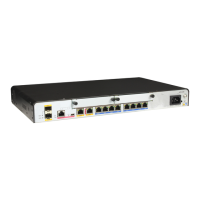2.1 WLAN Security Overview
The wireless security feature provided by 802.11 authentication can defend against common
network attacks. However, 802.11 authentication cannot fully protect networks containing
sensitive data because a few hackers can still access WLANs. To prevent unauthorized user
access, a security mechanism more secure than 802.11 authentication is required. Link
authentication, WLAN service data security, and user access authentication are used to provide
higher security.
Link Authentication
Open system authentication and shared key authentication are used for link authentication.
l Open system authentication
Open system authentication is the default and simplest authentication mode. Users do not
need to be authenticated in this mode.
Figure 2-1 Open system authentication
Client AP
Authentication Request
Authentication Response
The open system authentication process is as follows:
1. A wireless client initiates an authentication request.
2. An access point (AP) confirms that the wireless client has passed link authentication
and responds to the wireless client with an authentication success message.
l Shared key authentication
Shared key authentication requires a wireless client and an AP to be configured with the
same shared key.
Figure 2-2 Shared key authentication
Client AP
Authentication Request
Authentication Response (Challenge)
Authentication (Encripted Challenge)
Authentication Response (Success)
Huawei AR1200 Series Enterprise Routers
Configuration Guide - WLAN 2 WLAN Security Configuration
Issue 03 (2012-01-06) Huawei Proprietary and Confidential
Copyright © Huawei Technologies Co., Ltd.
25

